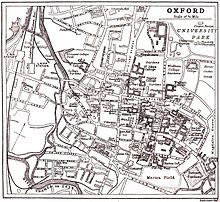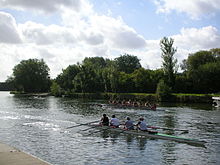
Anubis, also known as Inpu, Inpw, Jnpw, or Anpu in Ancient Egyptian, is the god of funerary rites, protector of graves, and guide to the underworld, in ancient Egyptian religion, usually depicted as a canine or a man with a canine head.

Isis was a major goddess in ancient Egyptian religion whose worship spread throughout the Greco-Roman world. Isis was first mentioned in the Old Kingdom as one of the main characters of the Osiris myth, in which she resurrects her slain brother and husband, the divine king Osiris, and produces and protects his heir, Horus. She was believed to help the dead enter the afterlife as she had helped Osiris, and she was considered the divine mother of the pharaoh, who was likened to Horus. Her maternal aid was invoked in healing spells to benefit ordinary people. Originally, she played a limited role in royal rituals and temple rites, although she was more prominent in funerary practices and magical texts. She was usually portrayed in art as a human woman wearing a throne-like hieroglyph on her head. During the New Kingdom, as she took on traits that originally belonged to Hathor, the preeminent goddess of earlier times, Isis was portrayed wearing Hathor's headdress: a sun disk between the horns of a cow.

The River Thames, known alternatively in parts as the River Isis, is a river that flows through southern England including London. At 215 miles (346 km), it is the longest river entirely in England and the second-longest in the United Kingdom, after the River Severn.
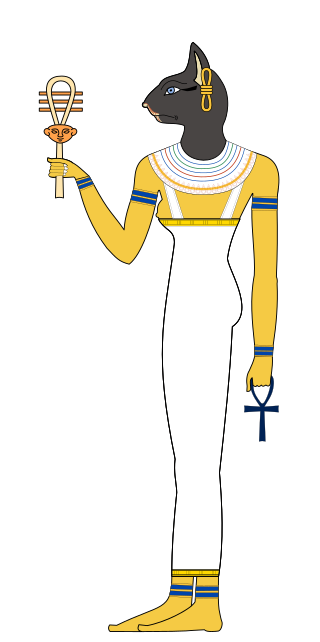
Bastet, also known as Ubasti, or Bubastis, is a goddess of ancient Egyptian religion possibly of Nubian origin, worshipped as early as the Second Dynasty. In ancient Greek religion, she was known as Ailuros.
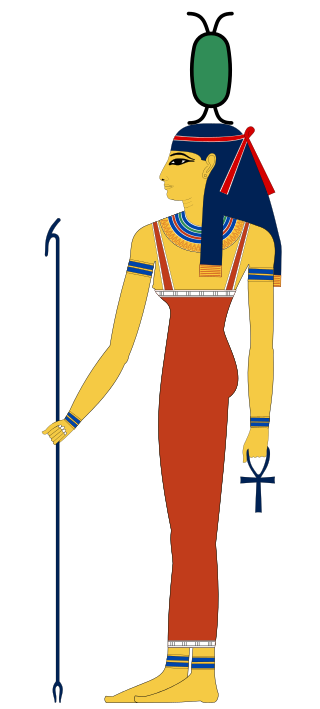
Neith was an ancient Egyptian deity, possibly of Libyan origin. She was connected with warfare, as indicated by her emblem of two crossed bows, and with motherhood, as shown by texts that call her the mother of particular deities, such as the sun god Ra and the crocodile god Sobek. As a mother goddess, she was sometimes said to be the creator of the world. She also had a presence in funerary religion, and this aspect of her character grew over time: she became one of the four goddesses who protected the coffin and internal organs of the deceased.

Satet,Satit or Satjet, Satjit in Ancient Egyptian, Greek: Satis, also known by numerous related names, was an Upper Egyptian goddess who, along with Khnum and Anuket, formed part of the Elephantine Triad. A protective deity of Egypt's southern border with Nubia, she came to personify the former annual flooding of the Nile and to serve as a war, hunting, and fertility goddess.

Sopdet is the ancient Egyptian name of the star Sirius and its personification as an Egyptian goddess. Known to the Greeks as Sothis, she was conflated with Isis as a goddess and Anubis as a god.

Dorchester on Thames is a village and civil parish in Oxfordshire, about 3 miles (5 km) northwest of Wallingford and 8 miles (13 km) southeast of Oxford. The town is a few hundred yards from the confluence of the River Thames and River Thame. A common practice of the scholars at Oxford was to refer to the river Thames by two separate names, with Dorchester on Thames the point of change. Downstream of the village, the river continued to be named The Thames, while upstream it was named The Isis. Ordnance Survey maps continued the practice by labelling the river as "River Thames or Isis" above Dorchester, however, this distinction is rarely made outside the city of Oxford.
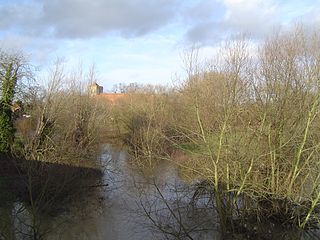
The River Thame is a river in Southern England. A tributary of the River Thames, the river runs generally south-westward for about 40 mi (64 km) from its source above the Buckinghamshire town of Aylesbury to the Thames in south-east Oxfordshire.
Isis is a goddess from the polytheistic pantheon of Ancient Egypt.

Henley Bridge is a road bridge built in 1786 at Henley-on-Thames over the River Thames, between Oxfordshire and Berkshire. The bridge has five elliptical stone arches, and links Hart Street in Henley with White Hill leading up a steep hill to Remenham Hill. It crosses the Thames on the reach between Hambleden Lock and Marsh Lock, carrying the Thames Path across the river. It is a Grade I listed building.

Pablo Fanque was a British equestrian performer and circus proprietor, becoming the first recorded Black circus owner in Britain. His circus was popular in Victorian Britain for 30 years, a period that is regarded as the golden age of the circus.
The Thames is a river in southern England, including the capital, London.

Exeter College Boat Club (ECBC) is the boat club of Exeter College, Oxford, England. The club trains on the Thames on the Isis stretch in Oxford and at Abingdon, Oxfordshire.

The Vacomagi were a people of ancient Scotland, known only from a single mention of them by the geographer Claudius Ptolemy. Their principal places are known from Ptolemy's map c.150 of Albion island of Britannia – from the First Map of Europe.

Oxford University Lightweight Rowing Club (OULRC) was the university rowing club for lightweight men at the University of Oxford which selected crews to race against Cambridge University Boat Club in the Lightweight Boat Races at the end of Hilary term. These races are usually held in late March each year.

William Frederick "W.F." Wallett was a popular circus clown in Victorian England, who also enjoyed modest celebrity in the United States. After he performed before Queen Victoria in 1844 at Windsor Castle, Wallett began promoting himself as "the Queen's Jester," and described himself this way in the title of his 1870 autobiography. For many years, he performed in the circus owned by his good friend Pablo Fanque Wallett also helped manage Fanque's circus.

William Batty (1801–1868) was an equestrian performer, circus proprietor, and longtime operator of Astley's Amphitheatre in London. Batty was one of the most successful circus proprietors in Victorian England and helped launch the careers of a number of leading Victorian circus personalities, such as Pablo Fanque, the versatile performer and later circus proprietor, and W.F. Wallett, one of the most celebrated clowns of the era. Also, while in operation for only two years, Batty's most lasting legacy is probably Batty's Grand National Hippodrome, also known as Batty's Hippodrome, an open-air amphitheatre he erected in 1851 in Kensington Gardens, London, to attract audiences from the Crystal Palace Exhibition nearby.

Trinity College Boat Club (TCBC) is the rowing club of Trinity College, Oxford in Oxford, United Kingdom. The club's members are students and staff from Trinity College and, occasionally, associate members from other colleges.

